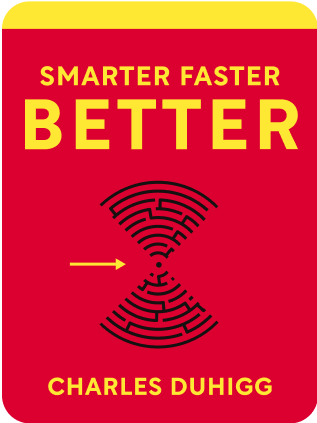

This article is an excerpt from the Shortform book guide to "Smarter Faster Better" by Charles Duhigg. Shortform has the world's best summaries and analyses of books you should be reading.
Like this article? Sign up for a free trial here .
Would you like to increase focus and stop getting derailed by distractions? Have you tried mental models?
You can learn how to be more focused by using mental models: narratives that you create in your mind. You might already be doing this—but not realizing how you can leverage this technique. You actually can train yourself to increase focus.
Read on to learn how to be more focused by using mental models.
You Can Teach Yourself to Focus
According to psychologists, the key to maintaining your focus may lie in creating mental models.
A mental model is a narrative that you create in your mind about the world around you. There are two forms of mental model:
- Telling yourself stories about what you’re experiencing as these events are occurring—for example, narrating to yourself who is speaking at each point during a meeting, what they are saying, and how others are responding.
- Creating a narrative that lays out what you expect to happen in the future—for example, imagining how a person may respond when you initiate a difficult conversation, and how the discussion may progress.
You may have already been creating mental models without even realizing it. This way of thinking is a common framework that your brain uses to understand the world around you. However, you may not have considered how you can harness the power of strong and thorough mental models to increase focus.
Use Mental Models to Increase Focus
Creating mental models can help you increase focus in two ways. Firstly, creating mental models of what’s happening around you in the present can lessen your chances of slipping into unhelpful processes such as cognitive tunneling or reactive thinking.
If you keep up a consistent mental model of your day as it’s happening—narrating each event as it happens—your brain never gets the opportunity to slip into a fully “relaxed” mode. It’s constantly active and paying attention to your surroundings. This means that if a sudden event occurs that requires your focus, the brain doesn’t have to make the sharp adjustment from relaxation to concentration. The transition is much smoother, leaving less room for the panic that triggers cognitive tunneling or reactive thinking.
In preventing these unhelpful processes from taking hold, you are maintaining control of your focus. You’re not at the mercy of our brain’s automatic reactions any more: you preserve your ability to consciously choose what to focus on and what to ignore. You can direct your focus to the task that’s going to lead to the highest amount of productivity. You are learning how to be more focused.
Secondly, creating mental models that outline your expectations for the future can prevent your focus from being derailed by distractions. Spending time creating an outline of what you think ought to happen during a certain period of time (for example, during a certain hour or on a certain day) helps you to identify what your focus should be during that period. You can easily decide what you need to concentrate on to make your outline reality.
Then, when the time comes to put your plan into action, you can swiftly identify potential distractions from this vision. Because you have such a strong idea of how you expect things to go, deviations from this outline grab your attention. You can then decide whether these distractions are important enough to require your focus, or whether they can wait until later. By consciously deciding whether distractions deserve your attention or not, you’re taking control of your focus and making sure that it stays on the path that will result in the greatest productivity.
Example: Qantas Flight 32
On November 4th, 2010, Qantas Flight 32 from Singapore to Sydney successfully made an emergency landing despite suffering catastrophic damage mid-air. Disaster was averted largely due to the actions of Captain Richard Champion de Crespigny, the pilot in command.
De Crespigny was known for creating mental models and discussing them with his crew prior to every flight. The models outlined what he and his co-pilots would do in case of various emergencies.
However, when Qantas Flight 32 suffered difficulties, too many systems failed for de Crespigny and his co-pilots to maintain focus using their standard mental models. All but one of the plane’s 22 main systems either suffered damage or shut down completely. The numerous malfunctioning systems were all providing the pilots with instructions on how to solve their various issues. This created information overload, and the pilots found it hard to know what to prioritize and where to channel their focus.
De Crespigny was able to take control of the situation by formulating a new mental model. He imagined that he was trying to land a Cessna rather than an Airbus A380. An Airbus A380 is a huge aircraft containing many complex systems. In contrast, a Cessna is a small, simpler airplane that only uses the basics.
By concentrating only on what a basic aircraft would need to do in order to land, de Crespigny simplified the situation and narrowed his focus. He was able to discern which of the Airbus’ complicated systems weren’t relevant to his present situation. Instead, he focused only on operating the basic systems that would be instrumental in ensuring a safe landing.
De Crespigny and his co-pilots were able to increase focus and successfully land the plane using this new mental model, saving hundreds of lives.
Example: Mental Models in the Workplace
Imagine you have an important report that’s due by the end of Monday. How could creating a mental model help you increase focus on—and achieve—your goal?
On Sunday night, you spend time creating a mental model. You imagine yourself spending Monday finishing and then sending off your report. This helps you to narrow your focus for the day: it’s all about the report.
Monday comes along, and you put your mental model into action. You know that small and non-time-sensitive tasks should wait, and you should instead focus on your report. However, midway through the day, you receive an email containing a question about a project that you’d managed.
Receiving this email wasn’t a part of your mental model. The model had you focusing on the report to the exclusion of everything else. Your mind immediately flags the email as a potential distraction. Rather than panicking and immediately shifting your focus to responding to the email, you evaluate whether or not it requires your attention now.
You consider whether the email is urgent enough to require your focus to be diverted from your report, and decide that it isn’t. There’s no time pressure on the query; your response can wait without there being any negative consequences. Meanwhile, there is time pressure on completing your report. It needs your focus right now.
Therefore, you continue to follow your mental model and make a note to return to the email later. Creating and sticking to your mental model has enabled you to increase focus.

———End of Preview———
Like what you just read? Read the rest of the world's best book summary and analysis of Charles Duhigg's "Smarter Faster Better" at Shortform .
Here's what you'll find in our full Smarter Faster Better summary :
- Why becoming more productive isn’t about working longer hours or constantly pushing yourself to do more
- The 8 principles for improving productivity
- How to create a work culture in which each employee is truly valued






